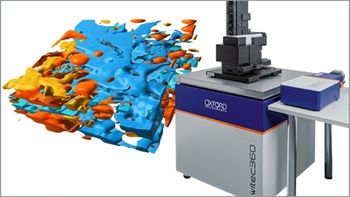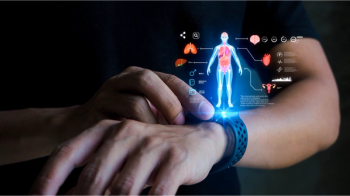Key Points
- Raman spectroscopy (RS) enables label-free, non-invasive analysis of molecular structures in real time.
- Advanced RS techniques like SERS and TERS offer increased sensitivity for detecting minute biological changes.
- RS is a powerful diagnostic tool in medicine, aiding in cancer detection, drug analysis, and hemoglobin monitoring.
- In microbiology, RS distinguishes microorganisms via spectral fingerprints of their pigments and metabolites.
A New Era for Biomedical Analysis
Raman spectroscopy (RS), once a niche analytical tool, is rapidly becoming a cornerstone of biomedical and microbiological research. In a comprehensive review published in the Journal of Photochemistry and Photobiology B: Biology, an international group of scientists outlines how RS is reshaping diagnostics, molecular biology, and microbial taxonomy with its ability to probe the molecular world without the need for labels or invasive procedures (1).
The study, titled “Spectral insights: Navigating the frontiers of biomedical and microbiological exploration with Raman spectroscopy,” brings together authors Elvin S. Allakhverdiev, Bekzhan D. Kossalbayev, Asemgul K. Sadvakasova, Meruyert O. Bauenova, Ayaz M. Belkozhayev, Oleg V. Rodnenkov, Tamila V. Martynyuk, Georgy V. Maksimov, and Suleyman I. Allakhverdiev. Their research was conducted across a collaborative network of institutions in Russia, Kazakhstan, and Turkey, including Lomonosov Moscow State University, Bahcesehir University, and Al-Farabi Kazakh National University (1).
Revealing Molecular Secrets
RS works by capturing the inelastic scattering of light—known as the Raman effect—first discovered by physicist C.V. Raman in 1928 (2,3). This subtle scattering provides a unique “fingerprint” of molecular vibrations, enabling scientists to identify chemical structures with high precision. The review describes recent advances like Surface-Enhanced Raman Spectroscopy (SERS) and Tip-Enhanced Raman Spectroscopy (TERS), which dramatically increase the technique’s sensitivity, allowing detection of even minute biomolecular changes.
“These modifications have expanded the boundaries of Raman’s capabilities, enabling deeper investigation into biological processes that were previously inaccessible,” the authors noted.
A Diagnostic Revolution in Medicine
In biomedicine, Raman spectroscopy is emerging as a game-changer. Its ability to deliver non-invasive, real-time insights at the molecular level is accelerating early cancer detection, refining surgical margins, and improving the identification of infectious agents (1).
One notable application is its use in monitoring hemoglobin’s ability to carry oxygen—critical for evaluating cardiovascular and respiratory health. Raman analysis of red blood cells can detect structural changes in hemoglobin, providing functional information previously obtainable only through more invasive techniques (1).
The review also highlights RS’s value in pharmacology. It can analyze drug composition and stability with high precision, making it an essential tool in quality control and pharmaceutical development (1).
Microbiology Meets Spectroscopy
In microbiology, RS plays a pivotal role in characterizing microorganisms. The team details how RS can distinguish species of microalgae based on the unique spectral signatures of their pigments, lipids, and other biomolecules. This non-destructive method enables rapid taxonomic classification, an invaluable tool in environmental monitoring and biotechnological applications (1).
Furthermore, Raman analysis allows researchers to track molecular adaptations of microorganisms in response to changing environments, providing clues to resilience and survival mechanisms. In protein studies, RS helps map secondary structures and protein-ligand interactions—key for developing targeted therapeutics (1).
Looking Ahead: Raman's Expanding Frontier
The review concludes by forecasting an even greater role for RS in future research. The technique’s expanding application in personalized medicine, disease diagnostics, and molecular biology—particularly in microRNA analysis—promises to deepen our understanding of health and disease at the molecular level (1).
“Raman spectroscopy is not just an analytical tool,” the authors emphasized, “but a lens through which we can observe the intricate choreography of life’s molecules” (1).
As technological improvements continue, Raman spectroscopy stands poised to further revolutionize biomedical and microbiological sciences, uniting disciplines under a single, powerful spectroscopic language.
References
(1) Allakhverdiev, E. S.; Kossalbayev, B. D.; Sadvakasova, A. K.; Bauenova, M. O.; Belkozhayev, A. M.; Rodnenkov, O. V.; Martynyuk, T. V.; Maksimov, G. V.; Allakhverdiev, S. I. Spectral Insights: Navigating the Frontiers of Biomedical and Microbiological Exploration with Raman Spectroscopy. J. Photochem. Photobiol., B 2024, 252, 112870. DOI: 10.1016/j.jphotobiol.2024.112870
(2) Workman, J., Jr. A New Radiation: C.V. Raman and the Dawn of Quantum Spectroscopy, Part I. Spectroscopy 2025, 40 (4), 30–33. DOI: 10.56530/pectroscopy.yo1483v7
(3) Workman, J., Jr. A New Radiation: C.V. Raman and the Dawn of Quantum Spectroscopy, Part II. Spectroscopy 2025, 40 (5), 50–57. DOI: 10.56530/spectroscopy.ys2983l4






